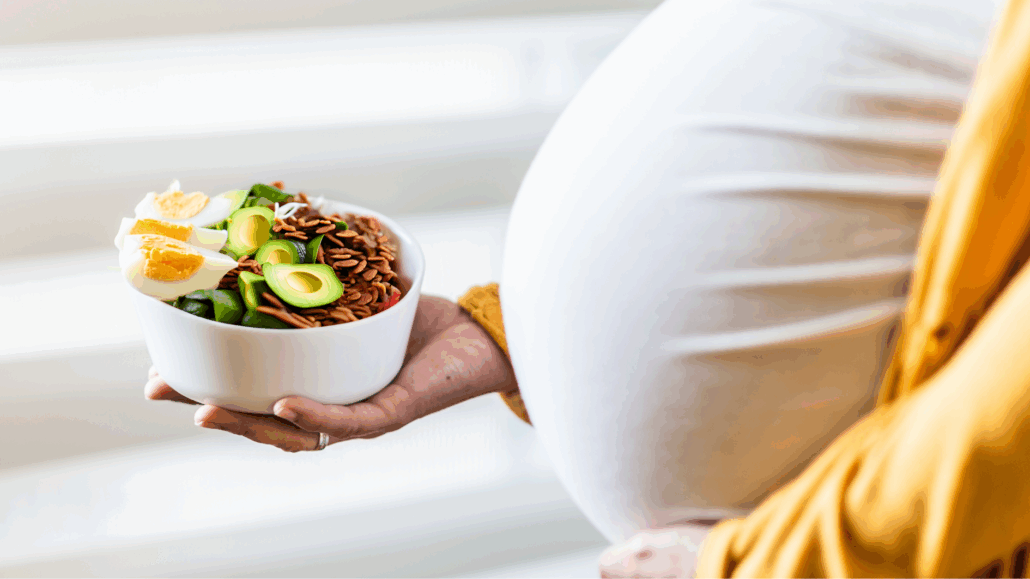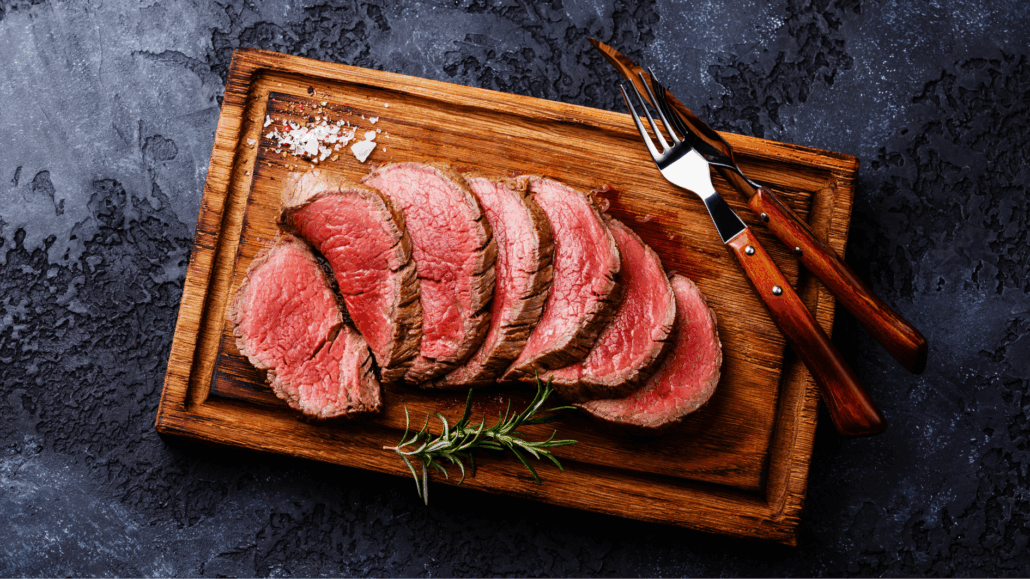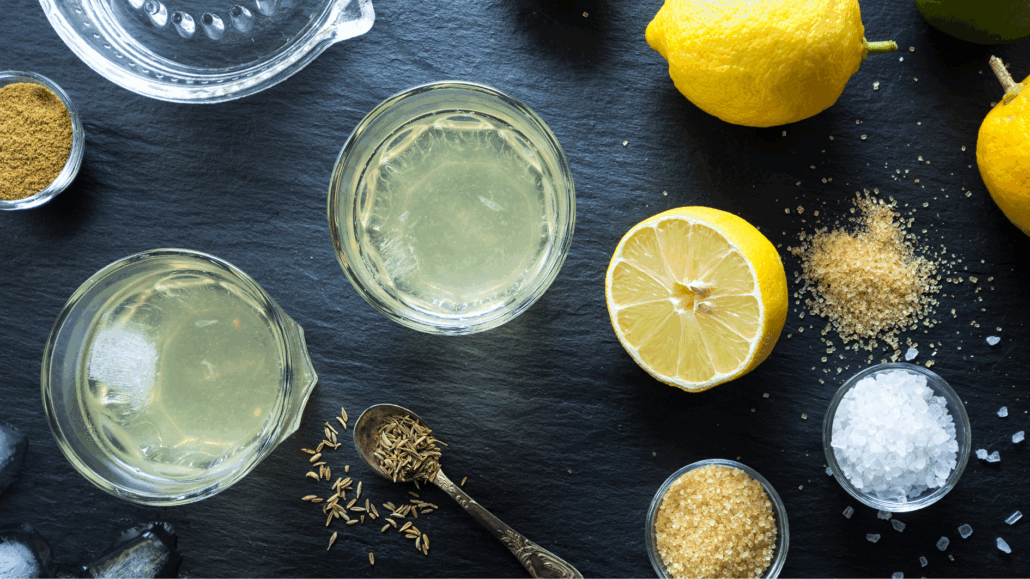We include products in articles we think are useful for our readers. If you buy products or services through links on our website, we may earn a small commission.
Ultimate No Carb Foods List: Ranked by Nutrition
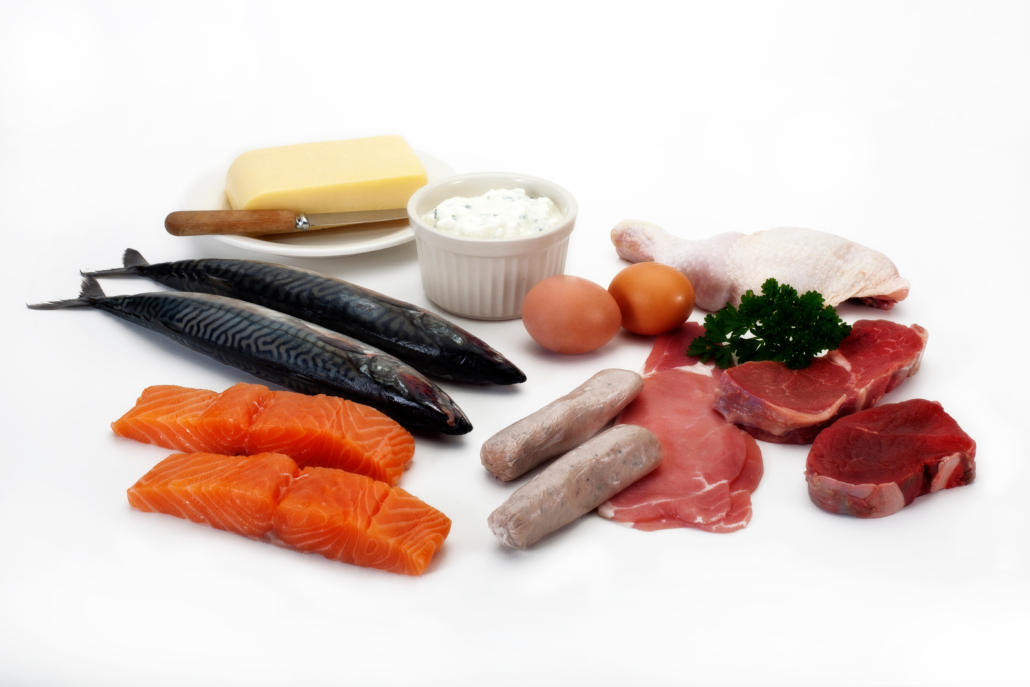
Low and Zero Carb diets have gained mass appeal for their many reported and studied benefits, including weight loss, hormone rebalancing, improved cognition, sustained energy and mental clarity, digestive repair, and reduced inflammation. But following a low or no-carb diet can be challenging in our industrial, agricultural system promoted by plant-based marketing schemes. That’s where this comprehensive no carb food list comes in handy.
In this article, we’ll provide a ranked list of no-carb foods that you can center your carb-free lifestyle around. Whether you’re following a strict all-meat carnivore diet, one of the many approaches to keto, or just want to reduce your carb intake, these options will set you up for success on your journey to reclaiming your health by reducing carbs.
Table of Contents
Why Cut Carbs?
People practice a no or low-carb diet because it has the power to dramatically improve various health markers.
One of the key mechanisms of the benefits of cutting carbs has to do with dramatically reducing inflammation.
Chronic inflammation is the root cause of numerous modern diseases and autoimmune disorders, including [3] [4] [5]
- heart disease
- hypertension
- type 2 diabetes
- epithelial cell cancers
- inflammatory diseases (including autoimmune diseases, bowel disorders, osteoporosis, infertility, and more)
The theory behind eliminating carbs has to do with aligning our diets with our evolutionary physiology. Our genetics evolved to regulate inflammatory responses in the context of a hunter-gatherer lifestyle characterized by a diet of low-carb, high-fat foods and low-impact movement. [6] [7]
Returning to an ancestrally-aligned low-carb diet is a way to rebalance the natural inflammation cycles in our bodies.
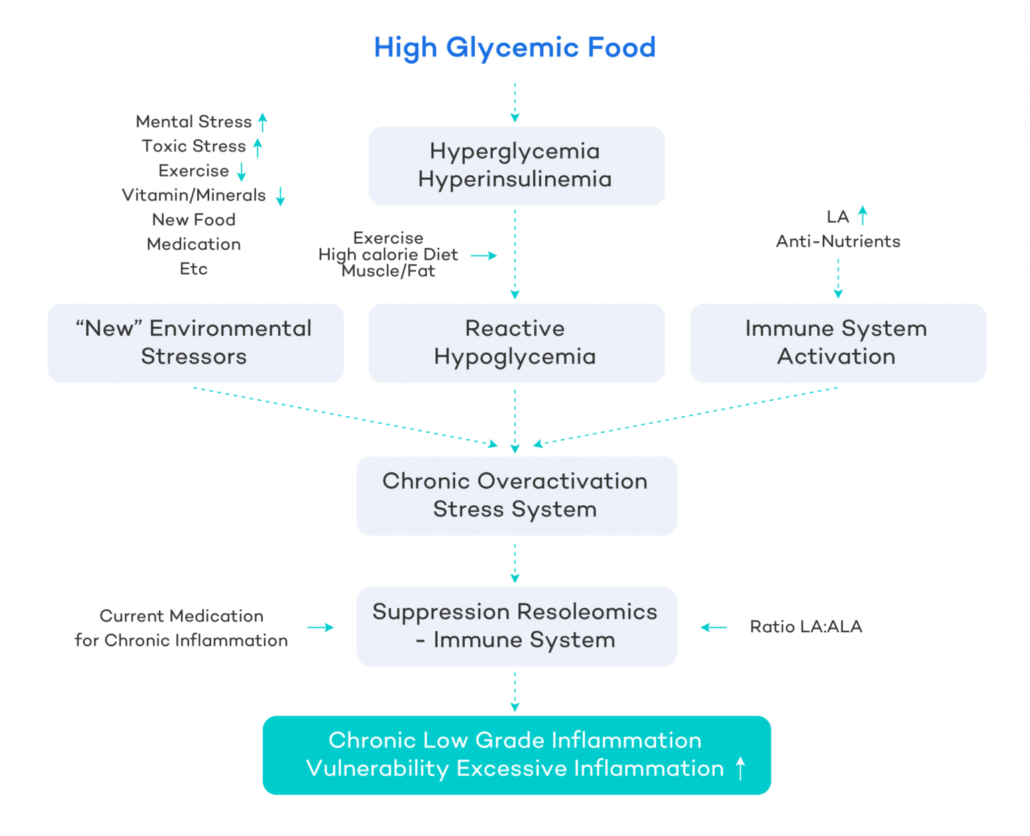
No Carb Ruminant Meats
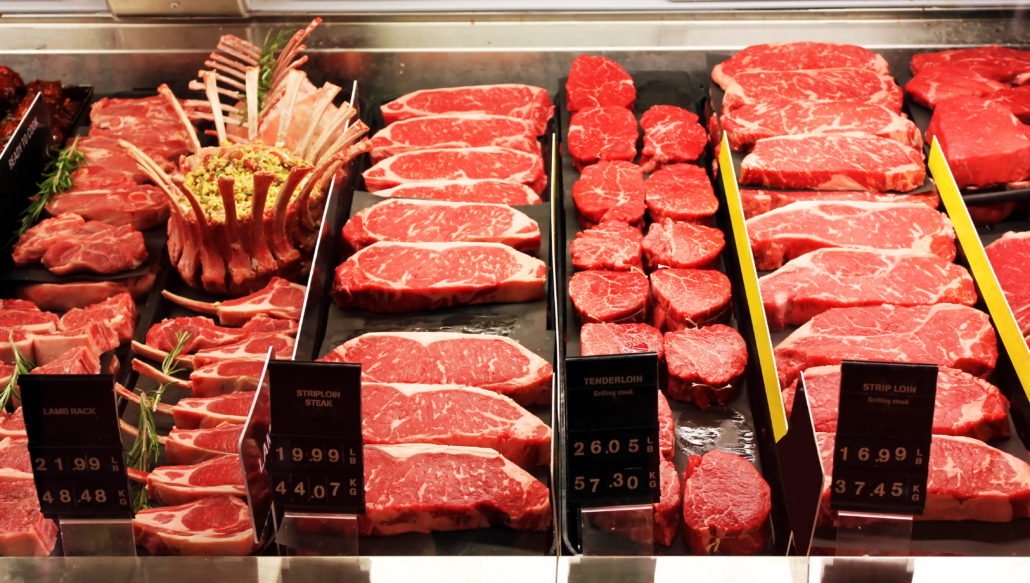
Though nearly every meat is a no carb food, ruminant meats are the centerpiece of well-formulated no and low-carb diets.
Ruminant animals have a rumen stomach that ferments cellulose from plants into fatty acids as the animal’s primary energy source. This process leads to the creation of an abundance of highly bioavailable nutrients, complete proteins, and optimal fatty acids for human health.
Non-ruminant animals like fish, pigs, and foul, though still nutritious, do not have the same ability to transform foods into optimal nutrients for human consumption.
Beef, Lamb, bison, and elk are the most common no carb red ruminant meats.
As Dr. Kiltz often says when referring to the human diet and evolution, “We cam out of the trees not to eat the grass, but to eat the grass eaters.”
We humans do not have rumen, which means that we cannot digest cellulose, and we don’t have a way of breaking down natural plant defense mechanisms called plant toxins and antinutrients. These compounds that inhibit nutrient absorption, degrade our intestinal barrier and cause inflammation are essentially filtered out of our food by ruminant animals.
Beef
Beef is the most accessible no carb ruminant meat, and it’s one of the most complete no-carb foods on earth.
By “complete,” we mean that you can literally thrive on a carnivore elimination diet of just fatty steak (like ribeye), salt, and water. This approach, known as the “Lion Diet,” has been popularized by carnivore enthusiasts like podcaster Joe Rogan, and psychologist Jordan Peterson.
Though ribeye is considered the king of no carb beef, cheaper options like ground beef provide a robust nutrient profile that often flies under the radar.
All cuts of beef provide essential B vitamins, zinc, selenium, and heme iron along with their more obvious contributions of protein (including meat-specific amino acids like tyrosine) and fatty acids including bene
And if you’re worried about saturated fat you may want to inform yourself about the new science showing that the demonization of saturated fat that occured back in the 1960s has undergone a major reevaluation, and is, in fact, not associated with heart disease, stroke, or increased risk of death. [14] [15] [16] [17] [18]
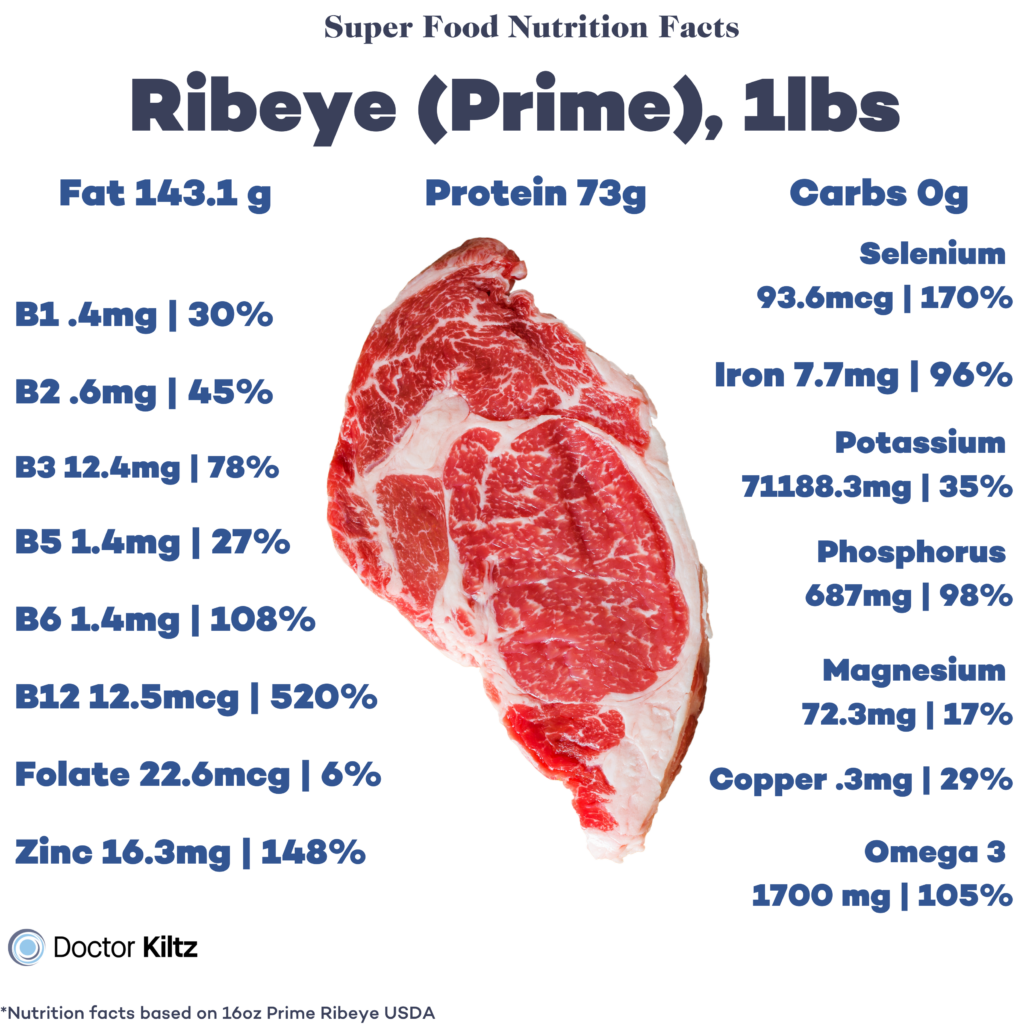
Lamb
Lamb is as nutritious as it is succulent. Like beef, lamb is loaded with B vitamins, iron, selenium, zinc, complete proteins, and healthy fats.
Where lamb really shines is its combination of an especially beneficial fatty acid called Conjugated Linoleic Acid, and a powerful antioxidant called glutathione.
Conjugated Linoleic acid has been shown to offer numerous health benefits, including [16] [17] [18] [19] [20] :
- Weigh loss and increased muscle mass
- Reduced the risk of heart disease
- Improved immune function
- Prevention and reduction of type-2 diabetes symptoms
- Supports bone formation and mineral density
Referred to as the “Master Antioxidant,” glutathione provides many protective functions throughout the body, including 3 [21] [22] :
- Reducing the risk of inflammatory and autoimmune diseases and disorders
- Reducing symptoms of Parkinson’s disease
- Protection against oxidative damage in children with autism
- Increased insulin sensitivity
| NUTRIENT | 227g (8 OZ) Ribeye Steak | %RDV | 227g (8 OZ) Lamb Rib Chops | %RDV | |
| Calories | 560 cal | 813 cal | |||
| Fat | 34g | 66.6g | |||
| Saturated Fat | 12g | 28.6g | |||
| Monounsaturated Fat | 12g | 27.3g | |||
| Conjugated Linoleic Acid | 860mcg | 264-1254mg | |||
| Omega 3s | 64mg | 5% | 1171mg | 85% | |
| Omega 6s | 925mg | 5% | 3918mg | 23% | |
| Carbs | 0 | ||||
| Protein | 65g | 49.8g | |||
| VITAMINS | |||||
| B1 (Thiamin) | .85mg | 25% | 0.2mg | 17% | |
| B2 (Riboflavin) | 1mg | 78% | 0.5 | 38% | |
| B3 (Niacin) | 19.04mg | 119% | 15.8mg | 98% | |
| B5 (Pantothenic Acid) | 1.7mg | 30% | 1.8mg | 32% | |
| B6 | 1.1mg | 64% | .6mg | 46% | |
| B9 (Folate) | 28mcg | 7% | 31.8mcg | 8% | |
| B12 | 7.7mcg | 323% | 5.7mcg | 238% | |
| Vitamin D | 70% | ||||
| Vitamin E | .7mg | 7% | .3mg | 2% | |
| Choline | 350mg | 70% | 170mg | 34% | |
| Vitamin K2 | – | – | 12.19 | 10% | |
| MINERALS | |||||
| Magnesium | 61.3mg | 15% | 52.2 | 12% | |
| Potassium | 869.4mg | 18% | 608.4mg | 13% | |
| Iron | 8.1mg | 45% | 4.2mg | 24% | |
| Copper | 0.3 mg | 30% | 0.3mg | 30% | |
| Phosphorus | 549.3mg | 44% | 401.8mg | 32% | |
| Selenium | 82.2mcg | 149% | 53.8mcg | 98% | |
| Zinc | 25.1mg | 228% | 9mg | 82% |
Bison
Bison boasts a similar nutritional profile to beef but is leaner, and lower in calories, and most cuts of bison are less marbled than beef. Though tender, bison is not a succulent as either lamb or beef and may not be optimal for no-carb diets, since all no carb diets are by default, high-fat diets.
That said, all you need to do to boost your macros of bison to an optimal low-carb high-fat range is to add a couple of tablespoons of butter or tallow.
Pork
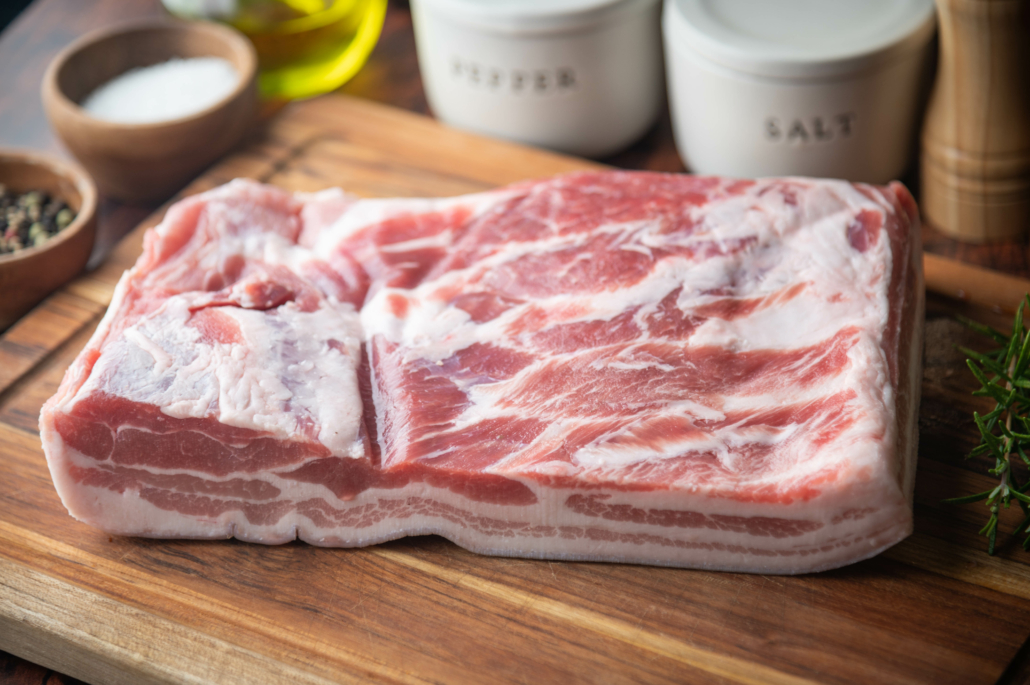
Pork is considered red meat, though it’s not ruminant meat.
Without a ruminant stomach, the food that pigs eat is less processed and has more of an effect on the nutrients of the meat than with ruminant animals. Like humans, pigs are what they eat.[2][3]
This makes it important to choose pork products from well-raised animals. Humane, organic, and pastured raised are labels to look for.
Pasture-raised pork from animals that get to spend ample time in the sun provides the added benefit of vitamin D.5
Poultry
Though poultry is accessible, relatively inexpensive, and a bonafide no carb food, it’s also too lean to enjoy without added fats on a low an no carb diet.
Poultry is generally handled more than ruminant meats, with more of the surface area of each cut being exposed to air. These factors increase the chance of contamination.
That said, specific cuts of poultry like duck liver and chicken liver are among the most nutrient-dense foods on earth with a hyper-abundance of highly bioavailable vitamin A (retinol) and vitamin B12. But liver is a bit tricky since it’s one of the few meats that do have a few carbs per serving–though not enough to impact ketosis.
Here’s a list of some of the types of poultry most suitable on a low or no carb diet.
| Poultry (100g) | Calories | Fat (g) | Protein (g) | Carbs (g) | % Calories Fat | % Calories Protein | |
| #1 | Duck (meat and skin) | 404 | 39.3 | 11.5 | 0 | 88 | 12 |
| #2 | Goose | 371 | 33.6 | 15.9 | 0 | 82 | 18 |
| #3 | Cornish Game Hen | 260 | 18.2 | 22.3 | 0 | 63 | 37 |
| #4 | Chicken wing | 290 | 19.5 | 26.9 | 0 | 61 | 39 |
| #5 | Chicken thigh (skin on) | 247 | 15.5 | 25.1 | 0 | 57 | 43 |
| #6 | Chicken Drumstick | 245 | 13.7 | 27.0 | 0 | 51 |
No Carb Fish and Seafood
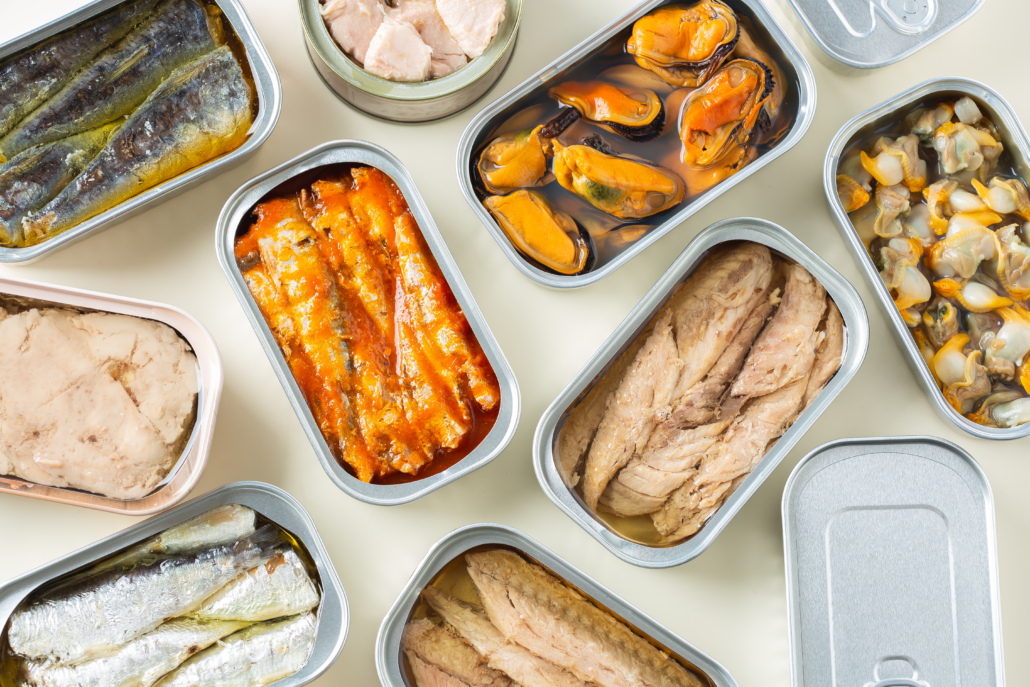
The top seafood and fish on our no carb food list are fatty options that boast loads of omega-3 fatty acids, B vitamins, and vitamin D.
It’s worth noting that nutrient-packed seafood options like oysters, mussels, and salmon roe all contain some carbs (around 3 grams per serving), so they’re not officially listed here.
But their incredible abundance of nutrients, especially zinc and vitamin B, are worth the minimal carb intake when consumed as a part of an overall low-carb eating plan.
Mackeral
Mackeral is an inexpensive nutrient-dense super-fish.
A 3oz serving of tinned mackerel provides the following nutrient highlights
- 91% of vitamin D
- 309% of vitamin B12
- 2990 mg of omega-3 fatty acids
- Zero carbs
Salmon
Salmon ranks high up on most people’s no carb food list in terms of culinary enjoyment.
Salmon provides over 300% of your RDV in vitamin B12 and significant amounts of various other B vitamins.
Much like with pork, where your salmon comes from can have a significant impact on its health benefits (or detriments).
For example, studies have found salmon raised in Chilean fish farms can contain up to 530 grams of antibiotics per 1 ton of fish. In contrast, Norwegian farmed salmon only has 1 gram of antibiotics per ton. 18 19
Tuna
Tuna is extremely high in protein, low in calories, and has no carbs.
However, Tuna is one of the higher mercury foods. It’s important to select low carb varieties of tuna, and to limit your consumption.
Here’s a list of low and high mercury types of tuna to help you choose wisely. For reference, the FDA recommends that a 150 lb person not consume more than 47.6 mcg of mercury per week. (4).
| Species | Mercury in ppm | Mercury (in mcg) per 3 ounces (85 grams) |
| Light tuna (canned) | 0.126 | 10.71 |
| Skipjack tuna | 0.144 | 12.24 |
| Albacore tuna (canned) | 0.350 | 29.75 |
| Yellowfin tuna | 0.354 | 30.09 |
| Albacore tuna | 0.358 | 30.43 |
| Bigeye tuna | 0.689 | 58.57 |
There are dozens of other popular no carb fish including
- Catfish
- Sardines
- Anchovies
- Cod
- Sea Bass
- Snapper
No Carb Fats
If you’re practicing a true low or no carb diet, getting enough quality fats is a must. That’s because your body can only get around 35% of it’s calories from protein without suffering protein poisoning. This means that at least 65% of your calories have to come from fat.
Butter
Butter, especially from grass-fed cows, is loaded with beneficial nutrients like conjugated linoleic acid (CLA), butyrate, vitamins, and minerals.
Research shows that eating butter can reduce your risk of diabetes, obesity, and heart disease.2 Butter is also linked to improved sleep 3, immune function, and fertility. [7]
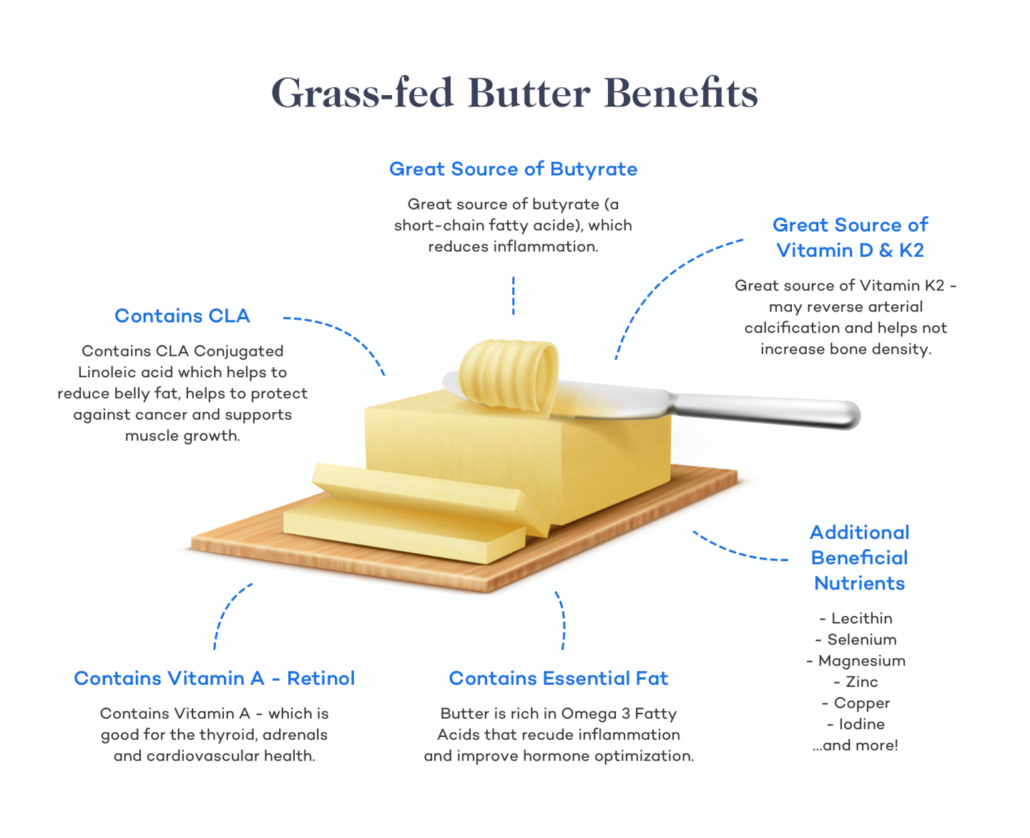
Ghee
Ghee can bring all the full-fat dairy benefits of butter, with the added ability to withstand higher temperatures.
With a smoke point of 465°F, ghee has an 80° higher tolerance than any other cooking oil! And if you’re still falling for the outdated anti-saturated fat scare tactics, a 2018 study of 200 people in India found that participants who ate more ghee and less vegetable oil had healthier blood cholesterol markers. [8]
Tallow
The long-chain saturated fats in beef tallow support healthy cell membranes and play a role as signaling molecules. [2] Eating more saturated fat can saturate your cell membranes, protecting your cells from glycation, oxidation, endotoxin buildup, and other cellular stressors. [3] [4] [5]
Lard
As with beef tallow, lard offers numerous essential and heat-stable fatty acids. In addition, pastured lard from pork that is allowed to bask in the sunshine is one of the best vitamin D sources on earth. Lard from pasture-raised pigs can be as high in vitamin D as cod liver oil and may be higher in other fat-soluble vitamins. [6]
Coconut Oil
Coconut oil is popular among no and low-carb dieters because of its abundance of medium-chain triglycerides (MCTs).
Making up 54% of its fatty acid content, MCTs are metabolized by the body into ketones–the energy molecules synthesized from fat, and from which the ketogenic diet gets its name.
Olive Oil
Olive oil is zero carb and the only beneficial vegetable oil. All others are fairly toxic and associated with the disease of civilization including heart disease, obesity, type 2 diabetes, inflammatory diseases, and various cancers.
For this reason, though vegetable “seed” oils like sunflower and canola oil are no card, they have no place on this list because they have no place in a healthy diet.
Olive oil, on the other hand, is central to beneficial low-carb approaches like the Mediterranean keto diet, and it’s a crucial source of fat for vegan and vegetarian keto dieters.
Studies show that the oleic acid in olive oil can reduce inflammation and reduce the risk of some types of cancer. [4][5]
No Carb Dairy
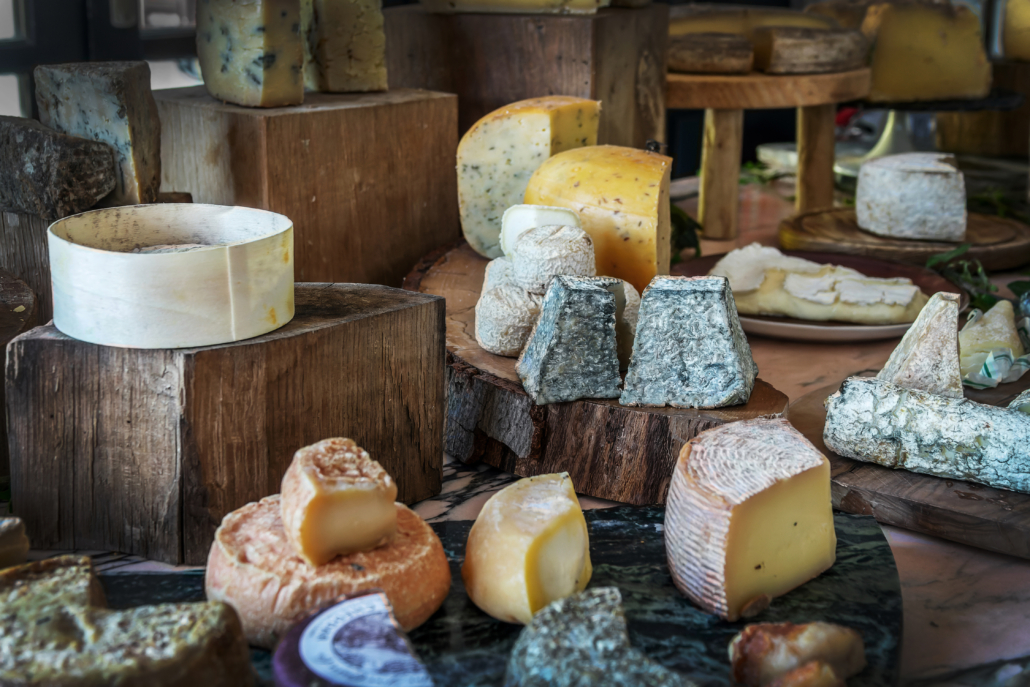
No carb dairy consists of a selection of high-fat cheeses. Milk and yogurt, even full-fat options, all contain carbs.
And even some of the healthiest cheeses contain trace amounts of carbs. We’re talking around 1 gram or less per 100-gram serving.
The most beneficial no carb dairy on our list are cultured and ripened cheeses like blue and camembert.
These cheeses can contain between 2900 and 4700 different beneficial bioactive peptides that form through the enzymatic breakdown of dairy proteins.3 5
The bioactive compounds in ripened cheeses have been found to:
- Reduce cholesterol levels
- Prevent arterial inflammation
- reduced blood clotting in veins
- reduce joint pain and relieve arthritis
An especially beneficial bioactive compound is called spermidine has been found to provide both cardioprotective and anti-aging properties.4 5
Based on nutritional value and potential health benefits, the top very low and no carb cheeses to choose from are:
- Creamy blue cheese
- Goats milk gouda
- Fresh goat cheese
- Muenster cheese
No Carb Beverages
The best no carb beverage is naturally mineralized spring water. The electrolytes and minerals in true mineral water are an important addition to a no-carb diet.
Common minerals in spring water include
- Sodium
- Potassium
- Magnesium
- Calcium
- sulfur
No carb beverages include
- Mineral water
- Herbal, green, black, and matcha teas (unsweetened)
- Black coffee (a dash of heavy cream is fine)
- Carbonated water
- Essenced carbonated water
Other no carb drinks that should be avoided or consumed in moderation include
- Diet soda
- Clear, unflavored spirits
No Carb Seasonings
Most seasonings are plant-derived and therefore contain trace amounts of carbs, but not really enough to warrant counting.
People practicing a no carb carnivore diet generally eliminate seasonings except for salt.
Salt
Salt is the ultimate no carb seasoning. This is because when you cut carbs, your body flushes water weight and along with it sodium and other electrolytes. This flushing is often a temporary side effect of the transition from a high-carb diet. A powerful antidote is to liberally salt your foods.
Other no (or virtually no carb) seasonings include
- Black pepper
- Basil
- Thyme
- Parsley
- Clove
- Herbs de Provence
- Italian seasoning
- Curry powder
- Oregano
- Onion powder
No Carb Condiments
Condiments are notorious hiding places for added sugars, especially corn syrup. However, there are a few condiments that are traditionally no carb.
Homemade Mayonaise
Most store-bought mayo is no carb, but it does contain loads of industrial seed oils.
The best no carb mayo is homemade–and here’s an easy recipe
Liquid Aminos
Look for liquid aminos made from coconuts. These add a salty, umami flavor profile.
Hot Sauce
It’s possible to find zero carb hot sauces, and others with only trace amounts.
Mustard
Dijon and grainy mustard are very low in carbs with .3 and .7 grams per serving, respectively.
Other No Carb Condiments
There are various other no and low-carb condiments, especially when considering keto-friendly varieties of traditionally sweet condiments like catchup. You can find a list here.
Nuts and Seeds
Nuts and seeds are generally low in carbs, but they all contain some carbs.
Here’s a list of the carbs in nuts for you to compare.
| Nut | Carbohydrate per 100g | Amount of nuts per 100g |
| Pecan | 4 grams | 65 nuts |
| Brazil nut | 4 grams | 20 nuts |
| Macadamia nut | 5 grams | 40 nuts |
| Hazelnut | 7 grams | 70 nuts |
| Walnut | 7 grams | 50 halves |
| Almond | 9 grams | 80 nuts |
| Hemp Hearts | 9 grams | 5/8 cup |
| Pistachio | 28 grams | 160 nuts |
 Fruits and Vegetables
Fruits and Vegetables
Fruits and vegetables all contain some carbs, but it is possible to consume veggies on a low-carb diet.
A guiding principle is the greener they are, the less carbs they contain. While starchy vegetables are carb bombs.
Here’s a list of low carb fruits and veggies
- Arugula
- Romaine Lettuce
- Spinach
- Avocado (technically a fruit)
- Asparagus
- celery
- Cucumber (technically a fruit)
- Eggplant
- Tomato (technically a fruit)
- Zucchini
- Cabbage
- Cauliflower
- Kale
- Broccoli
- White Mushrooms
- Green beans
- Brussel sprouts
- watercress
- Swiss chard
- Bell Pepper (green/yellow/red)
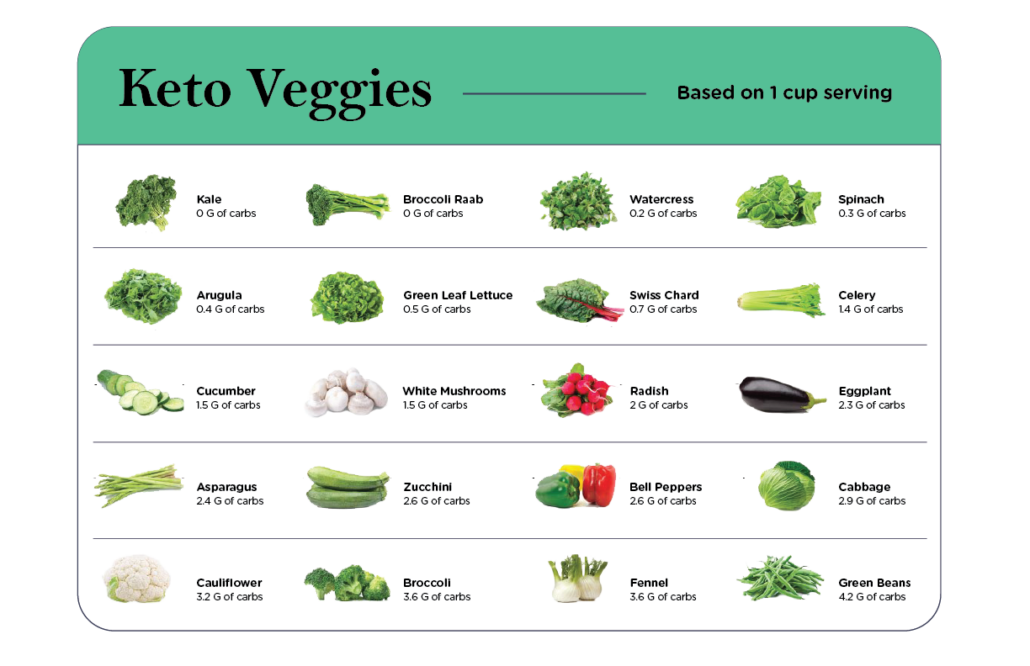
No Carb Food List: The Takeaway
Focusing on the no-carb foods on this list and eliminating processed and sugar-added foods is a major step towards reclaiming your health and well-being.
This list of no (and very low) carb foods will help you realign your metabolism with the ancestral diet that humans evolved on for nearly two million years before the dawn of grain-based agriculture, only 10,000 years ago.
No-carb foods typically include red ruminant meats, pork, fish, poultry, eggs, animal fats, some cheese, and a few condiments, spices, and unsweetened beverages.
Centering your diet around these nourishing whole foods can support weight loss, hormone rebalancing, improved fertility, cognitive performance, and reduced inflammation, among other benefits.











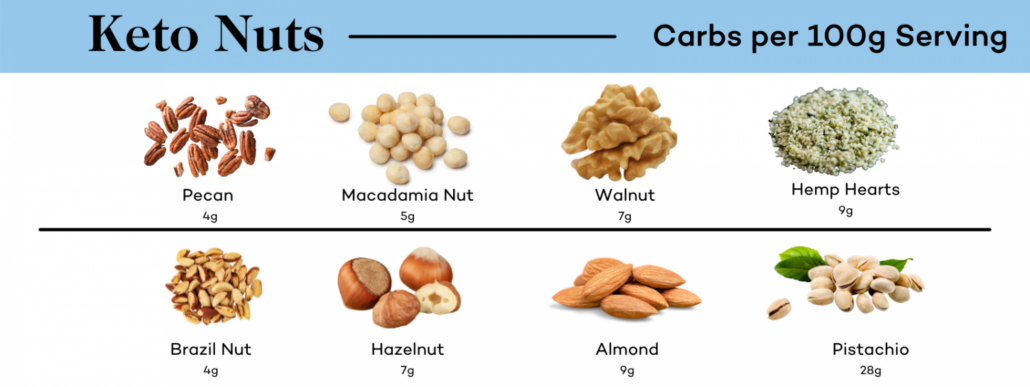 Fruits and Vegetables
Fruits and Vegetables
